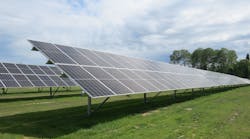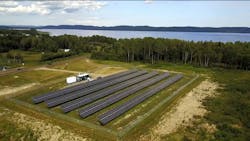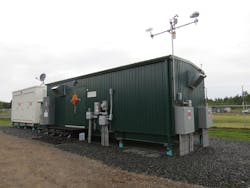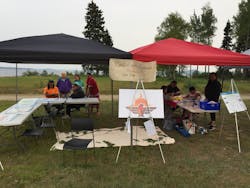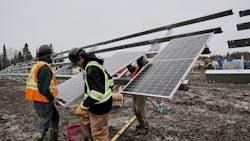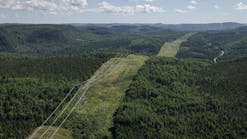Microgrid Helps Indigenous Canadians Use Less Diesel, Have More Energy Independence
According to its government, Canada has more than 630 Indigenous and nearly 300 remote communities, with many more in the U.S., Australia and other countries around the world. For the Indigenous and remote communities left off the main electrical grids in outlying areas across Canada, finding reliable energy resources — that also are from clean renewable power — has been challenging. Historically, diesel fuel has been one of the only off-the-grid energy sources for these communities, but diesel tends to be expensive because it must be transported by land or sea and has some serious environmental and human health pitfalls, including noise, air pollution, fire risks and spill risks.
Luckily, a solution to this challenge exists — one that uses natural weather resources, microgrids and battery storage. In more recent years, utility-scale renewable-energy technology improvements have made renewable energy accessible. Increased production has made wind, solar and energy storage equipment more of a commodity, and large-scale production has paved the way for reducing costs and making projects more viable.
Gull Bay Project
Gull Bay, Ontario, Canada, is home to an Ojibway Nation, Kiashke Zaaging Anishinaabek, where nearly 375 residents live on the reserve and just under 100 homes and 13 community buildings had been using diesel generators since the 1960s.
Ontario Power Generation (OPG) partnered with KZA on Canada’s first fully integrated solar energy-storage system based in a remote First Nations community. Recognizing it was not economically feasible to connect the community to the Ontario electrical grid, the Independent Electricity System Operator (IESO) established a fund to support communities and find alternative methods for reducing diesel use. The project received additional funding through the provincial and federal government.
Here is what community’s energy plan looks like now: Using solar, battery storage and grid technology, the clean energy microgrid has helped to reduce the use of diesel fuel by 30%, or approximately 130,000 liter (34,000 gal) per year. Around 1000 solar panels, laid out over a 1-ha (2.5-acre) site, supply the northern community’s energy needs during the day, while battery storage and diesel power provide energy at night and during the winter months.
The community renewable energy microgrid and diesel generating station are interconnected to maximize the use of renewable energy. Even so, the community continues to use diesel power at night and during days with low irradiance, as some feel hesitant to give up diesel entirely — especially when they have relied on it for generations. Projects such as this prove the technology works in real-world situations. They allow communities to become more comfortable with their new energy system and expand it to full capacity. This process ensures the community’s energy requirements are met seamlessly while maximizing the reduction in
carbon emissions.
Location Challenges
The approach of installing solar panels in a remote community is not new. However, what is unique is designing a complete microgrid that includes battery storage and doing it in a way that respects traditional values.
On the electrical side of things, grounding was identified almost immediately as a potential issue, as the community’s existing electrical system had a floating neutral and the microgrid needed a grounded system. The solution was to keep the microgrid system transformer energized constantly to maintain system grounding.
The remote location in Northern Ontario has limited communications, long distances from major vendors, extreme temperatures down to –45°C (–49°F) and a lack of accommodations for out-of-town workers. Therefore, the Gull Bay project team relied heavily on detailed preplanning to avoid winter work, leveraged off-site prefabrication for the E-House, security camera system, weather station, transformers and string inverters. Alltrade Industrial Contractors Inc. prefabricated photovoltaic wire harnesses and combiners, established seasonal lodgings and set up satellite internet for stable communications to the site.
The location’s spring thaw also was identified as a challenge to the overall installation of the microgrid, so sediment and erosion control was crucially important, plus the site sits on a high-water table. After Stantec and Alltrade performed a lot of geotechnical testing and pile pull testing, the project site was shifted some 20 m (66 ft) to the south to take advantage of stronger, more compacted soil.
The existing geotechnical site also presented challenges. By shifting the site back during the design phase, the project team increased the feeder cost to the diesel interconnection and avoided costly foundation refusals. Next, sleeves were added to the helical piles prior to pile caps and racking to mitigate frost heaving. Ultimately, this decision eliminated the need for concrete in the overall design — a good call because getting concrete to the remote site would have been a challenge of its own.
The Right Equipment
Selecting the right equipment and integrating all the separate systems was one of the last and biggest challenges of the project. Ensuring the solar inverters and battery energy storage system (BESS) were integrated successfully with the microgrid controller required an enormous amount of open and timely communication with all project stakeholders.
Some of the equipment selected for the project included Polar Racking fixed-tilt solar panels, Fronius Symo string inverters, Canadian Solar 365-W mono-facial modules, and Hitachi Energy’s MGC600 microgrid controller and 300/555-kW/kWh BESS.
Community Partnership
Many benefits came from building a genuine partnership with all project stakeholders, including the local community. A benefit plan based on community expectations included early engagement with the energy liaison, chief and council to aid in site selection, selecting the technology to be used and completing the required environmental screening. As part of the plan, a local job fair was held early on to meet with interested candidates from the community and resulted in quite a few community workers.
Safety requirements and documentation were communicated clearly and shared with new workers and subcontractors. Aggregates for the roads were purchased from local gravel pits. The community was left well versed in the operations and maintenance of the solar system. In fact, Kiashke Zaaging Anishinaabe owns and operates the microgrid and is offering to teach and train other First Nation communities how to operate andmaintain the system.
A Repeatable Process
It is possible to bring this microgrid solution to other Indigenous communities, remote towns and work sites. Although each project solution must be based on a location’s unique historical weather data and scalable to meet the needs of the community, the process used for this project is repeatable. Lessons learned from the project included conducting front-end site testing to learn about the soil, using off-site prefabrication to help save on cost and labor, eliminating the use of concrete and other scarce materials, using local labor and subcontractors, and close collaboration with all stakeholders.
Not only did this process meet the needs of the community but it also enabled project costs to be established up front, optimized energy production, established the lowest cost of electricity (LCOE) and used one of the best renewable energy combinations available.
Peter Bright is the senior principal, regional sub-sector leader, for solar at Stantec. With more than 30 years of experience, he provides business development and project and program management services for a wide variety of power and building clients. Bright works closely with clients during the feasibility, design, tendering, construction and commissioning phases of projects.
Shawn Bremner is senior business development engineer at Ontario Power Generation (OPG). Shawn has over 20 years of project
management experience working in the power generation industry including gas turbines, nuclear, hydroelectric, solar PV and battery energy storage systems.
Kevin Ritzmann is senior director at Alltrade Industrial Contractors Inc. An Ontario Master Electrician certified in construction and maintenance, he joined Alltrade in 2011 after completing his apprenticeship. He has led a range of renewable energy projects across Canada. Ritzmann is active in several industry associations, including the Transit and Rail Association for Canadian Contractors, Maintainers, and Standards (TRACCS), the Future Leaders Advisory Council for the Electrical Contractors Association of Ontario (ECAO), the Canadian Renewable Energy Association (CANREA) and Energy Storage Canada.
For More Information
Hitachi Energy | https://www.hitachienergy.com/us/en
Canadian Solar | www.canadiansolar.com
Fronius | www.fronius.com
Polar Racking | www.polarracking.com
